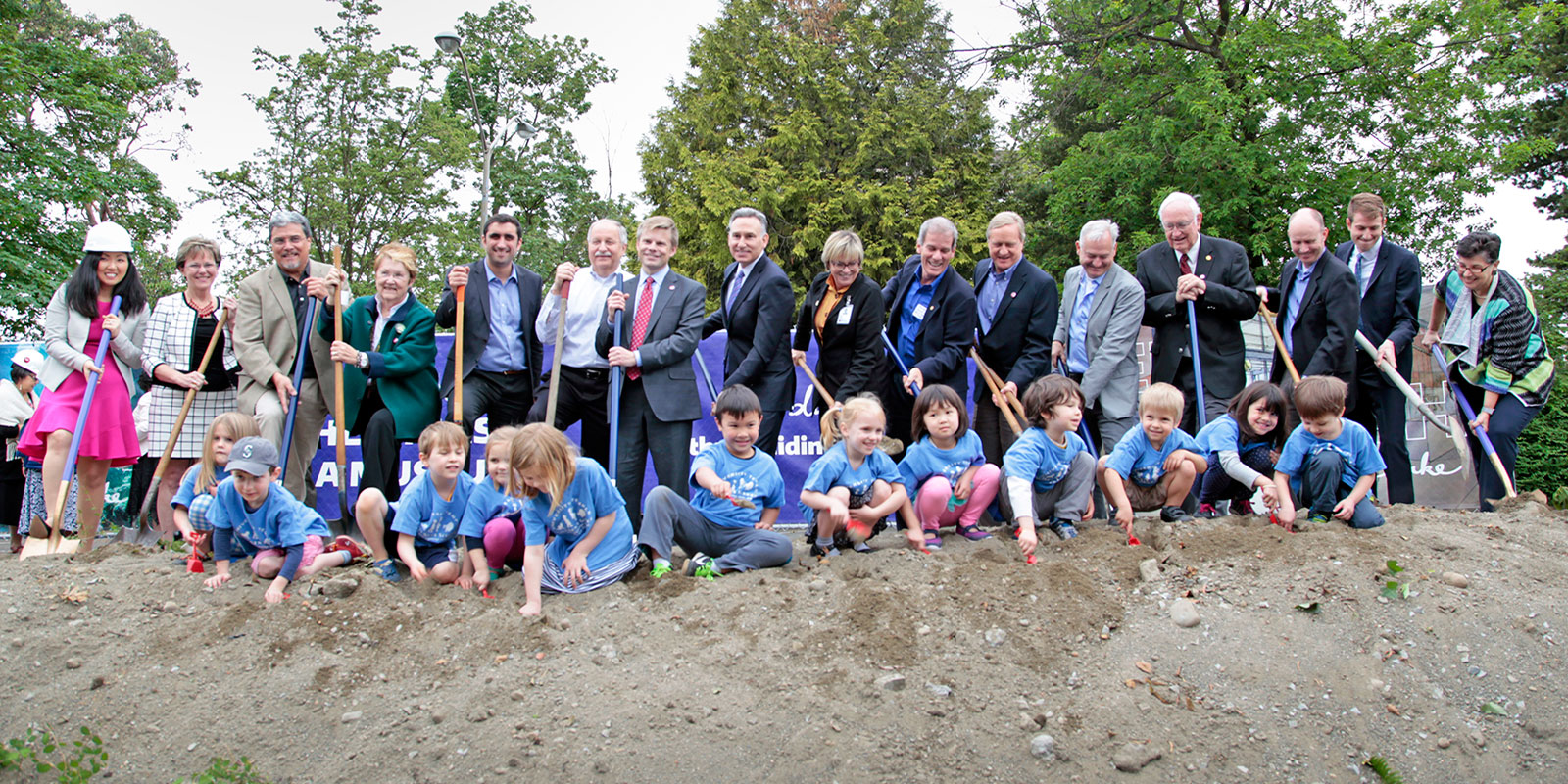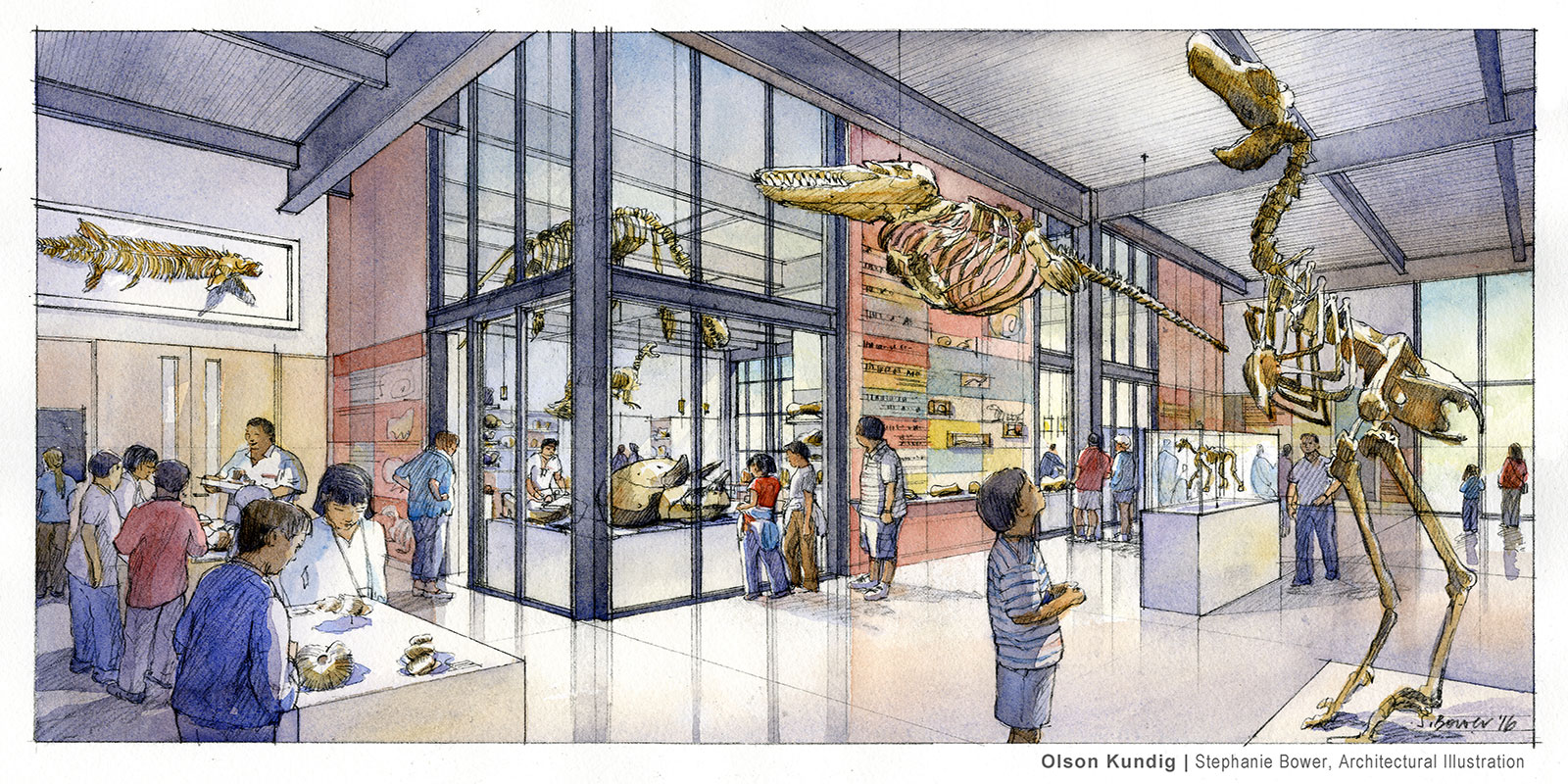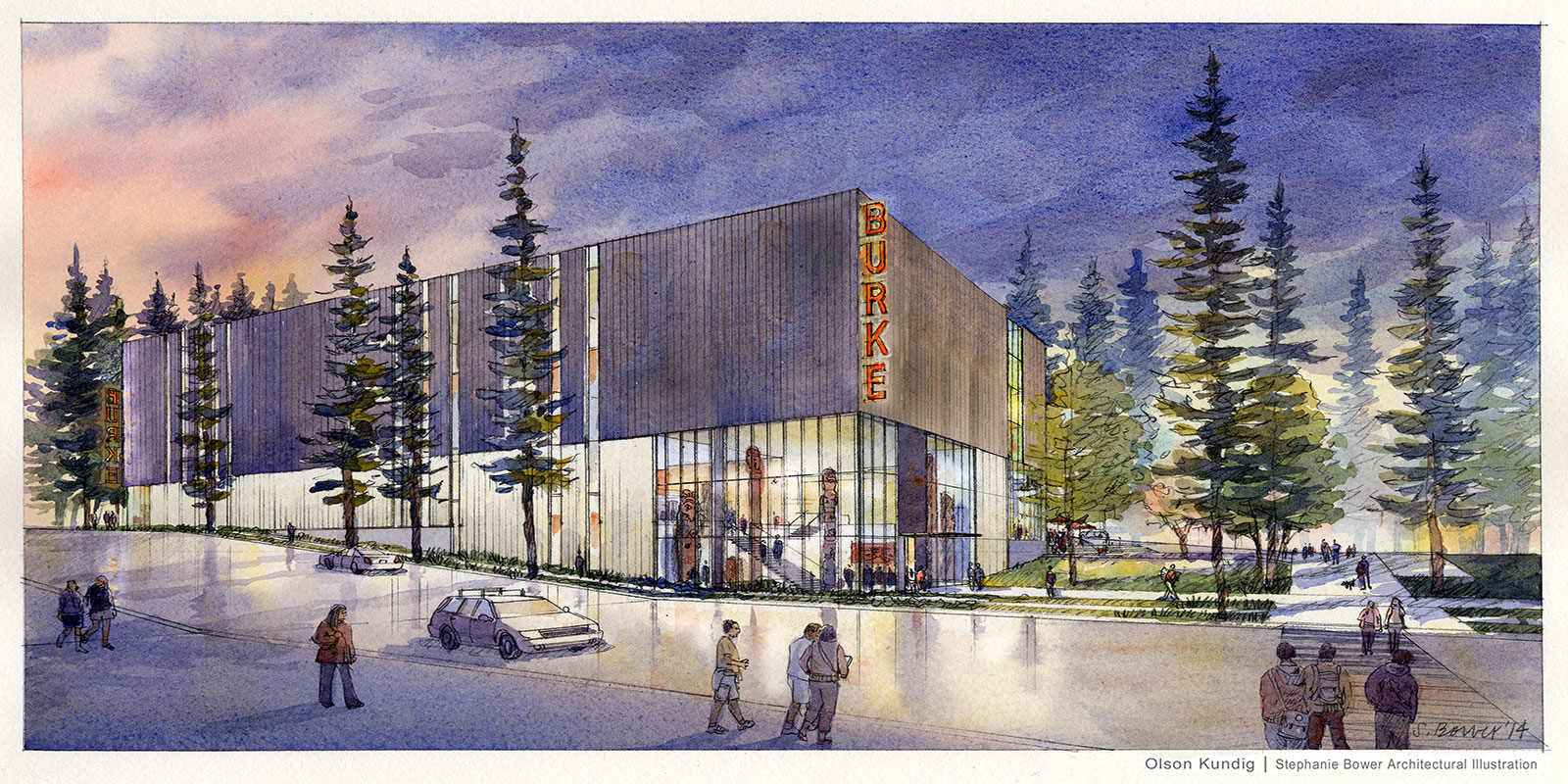These were just a few of the stories shared as more than 500 people gathered Wednesday to celebrate breaking ground on the New Burke: a new, flagship facility for the Washington State Museum of Natural History and Culture planned to open in 2019.
Reflecting the many partners working together on the project, more than a dozen speakers shared their excitement about the new museum.
“Some of you know that I have a special interest in equity and diversity. The Burke has been a very welcoming place for diverse students,” said University of Washington (UW) President Ana Mari Cauce. “The New Burke will even do more to help make the UW an inclusive campus. It is going to be a very welcoming and open place—a beacon to the entire community.”
The new, 113,000 sq. ft. building located on the UW Seattle campus will be 60% larger than the current facility. The New Burke will have an innovative “inside-out” design, integrating exhibits and learning areas with visible labs and collections storage throughout the museum.
“Now our people—tribal, non-tribal, everyone in our communities—are better poised to experience not only the physical depth and breadth of the collections that are housed here in this museum, but the depth of the history of this place, the sacredness of these lands, and the history and the identity of my people, of our people, of all of us,” said Cecelia Gobin, a member of the Tulalip Tribes.
For nearly eight decades, the Burke collections lacked a permanent home, moving between UW buildings. Today, the absence of climate control and backup power in the current facility, erected in 1962, now threaten the long-term viability of our state’s natural and cultural heritage collections—a total of more than 16 million objects.
“The Burke is the State Natural History Museum. It’s the oldest state museum and we have an obligation, I believe, to create a new facility to protect our natural heritage,” said Sen. Jim Honeyford (15th LD).
The Burke collections are used by researchers worldwide—and will be used in the future to answer questions we haven’t even thought to ask.
“There’s no way to plan for our future if we don’t know what came before. If we don’t know what’s here, we won’t know what to save,” said Rep. Joe Fitzgibbon (34th LD). “Here at the Burke, we have some of the largest collections of specimens—of birds, fossils, fish—in the world. Our state cares deeply about protecting our natural history, and we can’t do that unless we protect the knowledge that resides at the Burke.”
In the New Burke, state-of-the-art labs will serve more students, researchers and artists. More education space will allow the Burke to potentially double the number of Pre-K–12 students served each year.
“The new facility with allow us to take science and cultural education to the next level by connecting students with the scientists and researchers at the Burke—role models who will inspire the next generation,” said Frank Chopp, Washington State Speaker of the House (43rd LD). “Washington is a state of innovation and curiosity. It is only right that our state museum helps foster that in our young learners and in all of us.”
Students from the University Temple Children’s School—located across the street from the site of the New Burke—joined project donors and officials for the ceremonial groundbreaking. The group used shovels, pick axes and other field tools used by Burke archaeologists and paleontologists for the “dig.”
The groundbreaking was the culmination of a year filled with exciting steps toward the New Burke: completing design of the new building; receiving funding from the State of Washington, King County and the City of Seattle; success in private fundraising; and receiving approval from the University of Washington Board of Regents to break ground.
To-date, $67 million of the total $99 million project budget has been raised. The museum will request $24.2 million from the State of Washington in 2017. “The Legislature worked closely with the UW to make this day happen and we are working together to get this project done.” said Rep. Steve Tharinger (24th LD).
The Burke will also continue to raise private funds. Mary Dunnam and Ellen Ferguson, co-chairs of the Campaign for the New Burke, thanked current and future donors to the campaign. “There is still plenty of time to get involved in the project,” said Dunnam.
“Together, we are creating a museum that gives everyone in our community a chance to explore the life around us and see the world—see our past, see our future—with new eyes,” said Ferguson. “This campaign is more than our vision; it’s our invitation to all. To see through the Burke—and discover the life before you.”
Consultation with diverse community groups about the exhibits and education programs being developed for the New Burke will also be a major focus for the coming years.
“Today marks a special moment in time, where we begin work on a new space—a new house that is truly big enough to hold what has always been in the heart of this institution.”
Today marks a special moment in time, where we begin work on a new space—a new house that is truly big enough to hold what has always been in the heart of this institution.
Cecelia Gobin, The Tulalip Tribes
As the Burke looks ahead to momentous change, speakers hoped a few things would remain the same. “As we move forward, let’s remember all of the relationships and good work that happened here in the current building, and have that be the foundation of what happens in the new museum,” said Leonard Forsman, Chairman of the Suquamish Tribe.
“It’s my wish that the roots that have been established in the old Burke continue to grow,” said Warren King George, a member of the Muckleshoot Tribe. “That the foundation never break.”
“For 135 years, families and generations in Seattle have had a touch-point in the Burke Museum, a place to learn more about our state’s natural history, and the indigenous cultures and communities that called Seattle home long before any of us did,” said City of Seattle Deputy Mayor Hyeok Kim.
Added King County Executive Dow Constantine, “The new building will help continue that tradition for a new, and very different, century.”
View more photos from the New Burke Groundbreaking Ceremony. Learn more about the New Burke: newburke.org.




